Electric Guitar Specifications
Electric Guitar Specifications¶
This is a "top-down checklist" for the assembly of a solid-body electric guitar.
It can help you to build a guitar with specific sound and playability characteristics. Please read licence and the contribution guidelines before contributing.
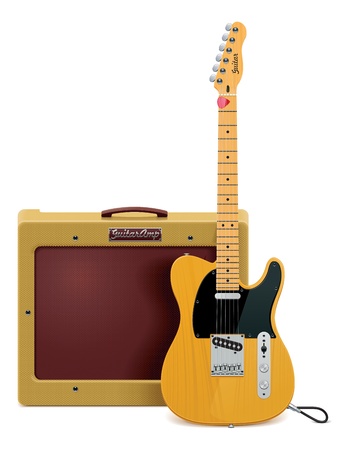
Sound and Playability Influencing Factors¶
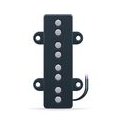
| Component | Sound* | Playability* |
|---|---|---|
| Guitar Neck | + | ++++ |
| Guitar Body | + | ++++ |
| Guitar Electronics | +++ | - |
| Strings | ++ | ++ |
| Scale Length | + | + |
| Woods (Body, Neck and Fretboard) | + | + |
*influence ( "-" stands for little, "++++" stands for very strong)
For example, for building a solid-body 'jazz-sounding' guitar you have to choose (top down by importance):
- vintage or jazz pickup with convenient potentiometer and capacitor values
- flatwound strings
- massive neck, hollow body with wood such as mahagony
- shorter scale length
Guitar Necks¶
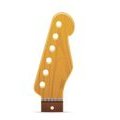
Neck thickness, neck width, neck contour and fret wire size affect playability and are a matter of personal taste. Important for good playability is balanced interaction of these components. Thicker neck often creates warmer tone.
usacustomguitars.com/necks - many neck shape and thickness combinations
musikraft.com - additional information for understanding of neck features.
Neck Profile¶
Neck Profile is the combination of contour (C, U, V , asymmetrc) and thickness (.0750" - 1")
| Contour | Thickness | Warmoth* | Fender* | Gibson* |
|---|---|---|---|---|
| D | thin | Wizard | D Shape | |
| C | thin/medium | Standard Thin | C Shape (AM Std) | Traditional C |
| C | medium | 59 Roundback | Deep C | Round C (1959 LP) |
| U | thick | Fatback | U Shape (Vintage Tele) | |
| V | thick | Boatneck | V Shape (Vintage 52 Tele) | |
| asymmetrisch | medium | Wolfgang | Modern C |
*warmoth - Warmoth Neck Profiles
*fender - see "NECK SHAPE" Filter
*gibson forum - Gibson Neck Profiles
Neck Nut Width and Nut Slot Spacing¶
| Category | Neck Nut Width | e1/E6 |
|---|---|---|
| Many Fenders from Japan | 41 mm (1-⅝") | approx. 34 mm |
| Standard | 42,9 mm (1-11/16") | approx. 35 mm |
| Acoustic analog | 44,5 mm (1-¾") | 35 mm till 37,5 mm |
| Superwide (Warmoth) | 48 mm (1-⅞") | approx. 40 mm |
The real e1 to E6 string spread can be controlled not only through nut width, but also by slot spread in the nut. For example, 44.5 mm wide nut can have e1 to E6 distance between 35 and 37.5 mm.
| Category | String spacing | e1/E6 | e1 to edge | Neck nut width |
|---|---|---|---|---|
| Narrow string spread | 7 mm | 35 mm | 4.75 mm | 44,5 mm (1-¾") |
| Medium string spread | 7.3 mm | 36.5 mm | 4 mm | 44,5 mm (1-¾") |
| Wide string spread | 7.5 mm | 37.5 mm | 3.5 mm | 44,5 mm (1-¾") |
Neck Heel Width and Mounting¶
Most guitar parts manufacturer adopted Fender's® neck heel and neck pocket dimensions:
- 56 mm (2-3/16") - Width
- 76 mm (3") - Length
- 16 mm (⅝") - Pocket Depth
These dimensions are not a standard. Only careful measurement ensures that your parts will be compatible.
Strat necks have a rounded base to their heel and Tele necks have a squared-off base to their heel, which makes it difficult to interchange the two types of necks across various bodies.
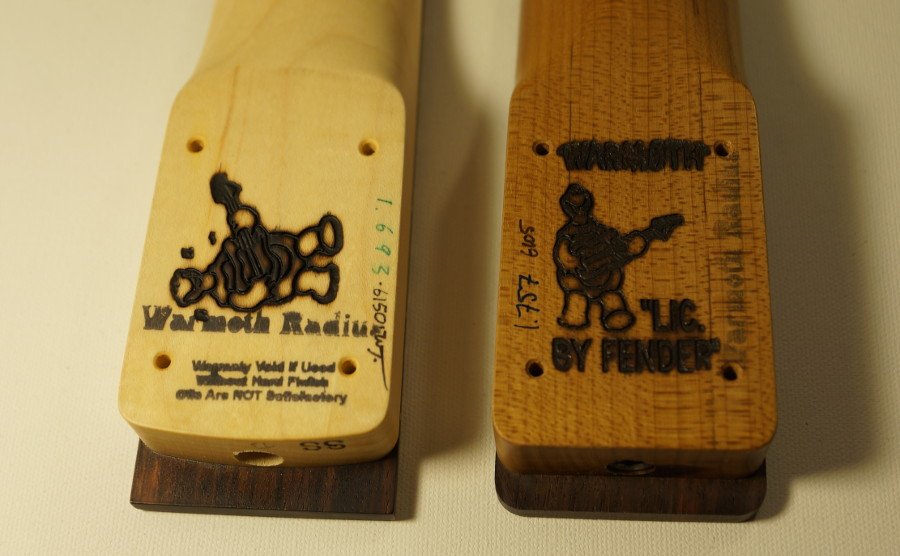
Standard Fender heel mounting is done with 4-Bolt Holes - ⅛" (3mm) diameter (spread of 2" x 1-½").
Fretboard's Radius¶
Smaller radius means a more rounded shape.
- 7-¼" - "Vintage" Fender®
- 9-½" - "Modern" Fender®
- 10" - Gibson®/PRS®
- 12" - Ibanez®
- 16" - Jackson®
- compound (10" - 16") - Warmoth® and others
youtube.com - understring radius gauges - video demonstration of three different gauges used for guitar setup and fretwork: standard, notched and understring.
Fret Sizes¶
| Title | Width | Height | Example |
|---|---|---|---|
| Small | narrow | low | vintage Fender |
| Medium | narrow | high | many Martins |
| Medium Jumbo | wide | low | many Gibsons |
| Jumbo | wide | high | moderne Fender |
| High Jumbo | wide | very high | many Ibanez |
lutherie.net - provides an excellent manufacturer/sizes overview.
Common Neck Head Shapes¶
- 6L - Fender Style - left in line
- 6R - for left-handed
- 3L/3R - "Gobson Stype"
- 4L/2R - "Musicman Style"
Tuner Holes¶
- approx. 8,7mm (11/32") - "Vintage Fender Style"
- approx. 10mm (25/64" = 9,9mm) - "Sperzel Style",
- approx. 10mm (13/32" = 10,3mm) - "Planet Waves Style"
- approx. 10mm on top and 8,7mm bottom - "Schaller/Grover/Gotoh Slyle"
Small holes can be enlarged with a sunk. Big holes can be retrofited by adapter bushings.
Guitar Bodies¶
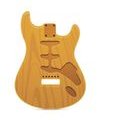
The sound of electric guitar depends mainly on the vibration behavior of the string itself and the reproduction characteristics of the pickup. The vibration behavior of the string depends (very little) on wood. The body itself is very thick compared to the neck, that is why the body wood type and form have very limited influence on the sound of electric guitar.
music.stackexchange.com - how much does electric guitar's body physics affect the tone and playability.
Body Shapes¶
The shape of an electric guitar can historically be divided into the following categories:
- ST (Strat)
- T (Tele)
- Single Cut (LP)
- Double Cut (SG)
- Hollowbody
- Other Forms
Bridge And Pickup Routing Overview¶
- Flat Mount Hardtail (Strat/Tele/Schaller)
- Tremolo (Strat)
- Tune-O-Matic (Gison)
- Other (Jazzmaster®, Jaguar®, Bigsby®, Kahler®, Line 6, etc)

Picture left to right: - American Standard Tremolo Routing and Single Coil Strat Pickup, - Vintage Telcaster Routing and Single Coil Tele Pickup, - Tune-O-Matic Style Routing and Habucker Pickup
callahamguitar.com - technical specifications of some coustom parts.
Flat Mount Strat Routing¶
Strat Vintage, Narrow & Standard
Sites holes ...o.o.o.o.o.o...
Bridge holes ..o.....o.....o..
| Model | E/e | Sites holes Ø | Sites holes distance | Bridge hole Ø | Bridge holes distance |
|---|---|---|---|---|---|
| Strat Vintage | 57 mm (2 ¼") | 3.18 mm (0.125") | 10.5 mm (0.413") | 3 mm (⅛") | 21 mm (.827") |
| Strat Vintage Narrow | 54 mm (2 ⅛") | 4.78 mm (0.188") | 10.5 mm (0.413") | 3 mm (⅛") | 21 mm (.827") |
| Strat Standard | 52.83 mm (2.08") | 3.18 mm (0.125") | 11.3 mm (0.446") | 3 mm (⅛") | 22.6 mm (.89") |
Flat Mount Tele Routing¶
Tele Vintage Tele Standard
Bridge holes ..o...o...o...o.. Sites holes ...o.o.o.o.o.o...
Sites holes ...o.o.o.o.o.o... Bridge holes ..o.....o.....o..
| Model | E/e | Sites holes Ø | Sites holes distance | Bridge hole Ø | Bridge hole distance |
|---|---|---|---|---|---|
| Tele Vintage | 54 mm (2 ⅛") | 3.18 mm (0.125") | 10.9 mm (.429") | 3 mm (⅛") | 21.6 mm (.85") |
| Tele Standard | 54 mm (2 ⅛") | 3.18 mm (0.125") | 10.5 mm (0.413") | 3 mm (⅛") | 32.4 mm (1.267") |
Flat Mount Schaller Routing¶
Schaller Flat Mount
Bridge holes ...o.....o.....o...
| Model | E/e | Bridge hole Ø | Bridge holes distance | Dimensions (LxWxH) |
|---|---|---|---|---|
| Schaller 47X | 51 mm - 55,5 mm | 3.18mm (0.125") | approx. X | 73 x 49 x 12(15) mm |
Tremolo Routing¶
Tremolo "Vintage": Tremolo "Standard":
..o..o..o..o..o...o... .....O.......O.....
| Model | E/e | Holes | Hole Distance | Hole Ø |
|---|---|---|---|---|
| Mexico Strat | 52,4 mm (2 1/16) | 6 | 52,4 mm (2 1/16) | 3 mm (⅛") |
| Vintage | 56,36 mm (2 7/32") | 6 | 55,9 mm (2.2") | 3 mm (⅛") |
| American Standard | 52,83 mm (2.08") | 2 | 55,9 mm (2.2") | 9,5 mm (.375") |
| Floyd Rose ("recessed") | 53 mm (2-3/32") | 2 | 74 mm (2.913") | 9,91 mm (.390") |
| Schaller 2000 | 53,5 mm | 2 | 56 mm | 10 mm |
| Schaller vintage | 53,5 mm | 2 | 74,3 mm | 10 mm |
| Wilkinson ("recessed") | 54 mm (2-⅛") | 2 | 55,9 mm (2.2") | 9,7 mm (.382") |
Tune-O-Matic Gibson Style Routing¶
Tune-O-Matic Recessed Tune-O-Matic "Strings through the body"
Tailpiece ..........o......
Tailpiece ....o............ ....o.o.o.o.o.o...
Bridge ..o..........o... ..o............o..
| Model | E/e | Bridge | Tailpiece | Tailpiece Top | Tailpiece Bottom | Tailpiece Ø |
|---|---|---|---|---|---|---|
| Tune-O-Matic | ca. 52 mm* | 74 mm (2.91") | approx 82 mm* | 38 mm (1.49") | 41 mm (1.61") | approx. 11 mm (0.44") |
Instead tailpiece - there may be "strings through the body" drillings.
Other Rare Bridge Variants¶
- Wrap-Around (bridge-tailpiece combo - the strings are installed through the front side and wrapped around)
- Jazzmaster®
- Jaguar®
- Bigsby®
- Kahler®
Pickup Routing¶
- Single Coils (Strat)
- Single Coils (Tele Neck)
- Single Coils (Tele Bridge)
- Humbucker
- Wide Humbucker *
- Mini Humbucker
- P90
- Lipstick Tube
- Jazzmaster
*Wide Humbucker (same as Seymourduncans "Trembucker" or Dimarzios "F-spaced Hambucker") can be used for guitars with larger string distance with standard "Humbucker Routing". Measure from the middle of the high string to the middle of the low string, directly over the pickup. If the distance is greater than two inches or 50mm, go for a Wide Humbucker.
Exact specifications can be found on the manufacturer's website like:
bareknucklepickups.co.uk - dimensions
In addition to classic HH routing (2X hambuckers), there are the following variants: - SSS (Strat, Nashville Tele) - HSS (Strat Humbucker im Steg, Modern Player Tele) - HSH (Strat), - HS (Strat, 72 Tele) - SS (Tele), - HP90 (Yamaha Pacifica), - S (Tele Esquire), - and some other exotic combinations
Tuning Machines¶
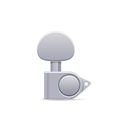
Tuning Machines Options: - Configuration: 3L+3R (Gibson style), 6-in-Line (Fender style), 4L/2R (Musicman style) - Ratio - for 1x winding around the shaft head - 1x rotation necessary. Larger ratio (1:18 > 1:14) allows finer adjustments. - Standard vs Locking - with locking tuners strings are inserted through the axle bore and fixed by a screw from the outside
Bridges¶
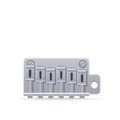
Guitar bridge has large influence on playability (mainly through string spacing). Wider string spacing is better for finger-picking style, narrow spacing gives easier control when playing leads with distorted tone. Bridge and Pickup Routing chapter above describes common bridge categories with string spacing specification.
Bridge form and material have also some influence on sound. Good manufacturers provide detailed product information on their pages:
ABM - Aluminium, Bell Brass and Steel comparison - indicates that Bell Brass and Steel shape the guitar sound with character, while Aluminum acts largely neutral in the transfer of tone.
Hardware Parts Checklist¶
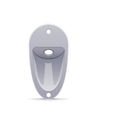
The following list summarizes the accessories that are required to complete your own guitar building project
- Jacks & jackplates
- Neck plate (neck-to-body)
- Pickguard or pickup mounting rings
- Screws for all parts above
- Control plate (only for for standard tele)
- String ferrules (String-thru Top or Bottom - if you use "string through body" instead of bridge)
- String retainers. see premierguitar.com article about design and construction
- Strap holders
For each screw, the hole must be pre-drilled to the core diameter (not outer diameter)
Electronics¶
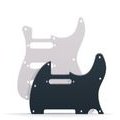
Electronics exerts greatest influence on the overall sound of a solid-body electric guitar.
buildyourguitar.com - The Secrets of Electric Guitar Pickups by Lemme - "If you know the resonant frequency and height of the resonant peak, you know about 90 percent of a pickup's transfer characteristics. Some other effects cannot be described using this model, but their influence is less important".
Frequency response of a magnetic pickup may look like this 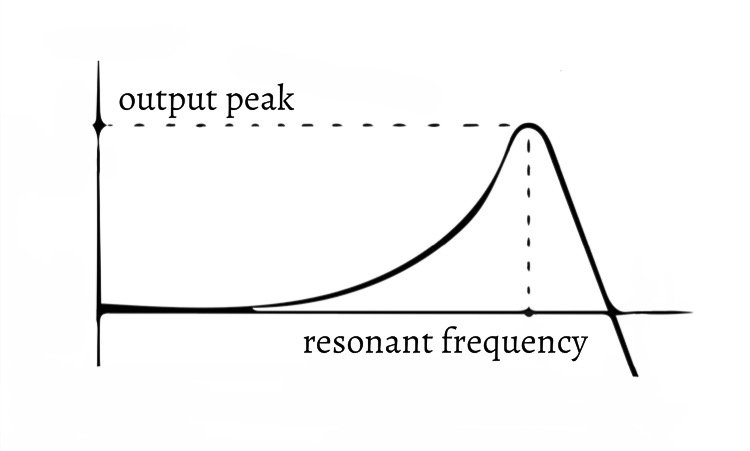
| Sound group | Resonant frequency | Resonant peak | Example Pickup |
|---|---|---|---|
| bright | 3 - 6kHz | high peak | Fender single coils |
| powerful | 2 - 3kHz | medium high peak | Gibson PAF |
| mellow | 1.5 - 2kHz | low peak | Rolling back tone pot |
Following topics change resonant frequency and resonant peak:
- Pickup Properties - position and height of frequency peak vary from type to type.
- Sound Control With Switches - Hambucker coils are switched in series by default, switching them in parallel or using only one of the coils will increase resonant frequency and the sound will have more treble.
- Potentiometer and Capacitor Values changing provides also simple way to change resonant frequency and peak.
- Cable capacitance - longer cable will lead to lower resonant frequency.
- Amp input impedance
Pickup Properties¶
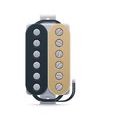
- Wiring: 1, 2, 3 or 4-Conductor (4-Conductor allowing most flexible wiring)*
- Position: Bridge, Neck, Middle
- Symmetrical vs asymmetrical connection type
- Output: low(vintage), medium, high (vintage used often for jazz and blues)
- Passive vs. Active (Active often used for distortion sound)
- D.C. Resistance: indication how much output a pickup will have
- E.Q. chat: A general idea as to the Bass, Mids and Treble.
seymourduncan.com - pickup selector
dimarzio.com - pickup picker
Classic humbuckers are asymmetrical. They are internally wired in series (i.e. serial - brings more power) in opposite phase (less noise). The current multi-Conductor PUs offer the option of switching the coils differently using push / pull pots, mini switches, toggles, mega switches and rotary switches, and allow broad control over the sound directly on the guitar.
| Conductors | Connection Type | Coil Split | Seriell/Parallel | Phase Switch | Example |
|---|---|---|---|---|---|
| 1x | Asymmetrical | Humbucker Mode | Seriell | No | Shadow AZ48 |
| 2x | Symmetrical | Humbucker Mode | Seriell | Yes | Fender Wide Range (Mexico) |
| 2x | Asymmetrical | Humbucker & Single Coil Mode | Seriell | No | Benedetto B6 |
| 3x | Symmetrical | Humbucker & Single Coil Mode | Seriell | Yes | viele aktive PUs |
| 3x | Asymmetrical | Humbucker & Single Coil Mode | Seriell and Parallel | No | PRS 59 |
| 4x | Symmetrical | Humbucker & Single Coil Mode | Seriell and Parallel | Yes | all 4-Conductor PUs |
Sound Control with Switches¶
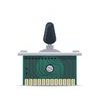
| Switch | Coil Split | Seriell/Parallel | Phase Switch | PU switch |
|---|---|---|---|---|
| Toggle Switch | - | - | - | y |
| Blade Switch "Fender" | - | - | - | y |
| X-Way-Blade "Megaswitch" | y | y | y | y |
| Mini-Switch SPDT(ON/ON) | y | - | - | - |
| Mini-Switch SPDT(ON/OFF/ON) | y | - | - | - |
| Mini-Switch SPDT(ON/OFF/ON) | y | - | y | - |
| Mini-Switch DPDT(ON/ON) | y | y | y | - |
| Push/Pull-Pot DPDT(ON/OFF/ON) | y | y | y | - |
| Mini-Switch DPDT(ON/ON/ON) | y | y | y | y |
| Drehschalter | y | y | y | y |
- Coil Split - "Single Coil Sound"
- Seriell/Parallel Schaltung - "double Single Coil Sound"
- Phase-Switch - "Out of Phase Sound"
SP = Single Pole, DP = Double Pole, DT = Double Throw
SPDT (ON/OFF/ON): SPDT (ON/ON):
0 X X | 0 0 0 | X X 0 0 X X | X X 0
DPDT (ON/OFF/ON): DPDT (ON/ON): DPDT (ON/ON/ON):
0 X X | 0 0 0 | X X 0 0 X X | X X 0 0 X X | X X 0 | X X 0
0 X X | 0 0 0 | X X 0 0 X X | X X 0 0 X X | 0 X X | X X 0
Example: "Seriell/Parallel und Coil Split at same time" are possible with 4 Push/Pull Pots, 4 Mini-switches (i.e. duncan triple shot) or by 5-Way Blade Megaswitch
open.guitars (german) - Hambucker Conductor/Coils switching options.
Potentiometer and Capacitor Values¶
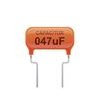
| Sound group | Pot | Cap | Examples |
|---|---|---|---|
| standard hambucker | 500K | 0.047mF | most hambucker equipped guitars |
| bright | 500K | 0.022mF | some guitars (U.S. FAT Tele) |
| brighter | 500K | 0.01mF | some custom models |
| brightest | 1M | 0.01mF | some custom models |
| standard singele coils | 250K | 0.022mF | most strat & tele models |
| jazzy | 250K | 0.047mF | some teles (ASAT BluesBoy) |
http://www.planetz.com/guitar-tone-capacitors-material-types - comparison of tone capacitor material types and capacitance values.
Volume and Tone Potentiometer Options¶
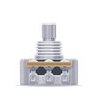
| Group | Pot body Ø | Bushing Ø | Bushing length | Shaft length | Example |
|---|---|---|---|---|---|
| standard | 24 mm | 8 mm | 10 mm | 19 mm | most fender guitars |
| mini | 17 mm | 7 mm | 10 mm | '>' 17 mm | many jazz guitars |
| long | 24 mm | 8 mm | 20 mm | 27,5 mm | most Gibson LP guitars |
- Resistance: 250K, 300K, 500K, 1M
- Taper: Audio, Reverse Audio, Linear, Balance
- Shaft Type: Knurled, Round & Plain
- Shaft Diameter: 6 mm (0.236 in), 6.35 mm (0.25 in)
- Shaft Length: 17mm, 19 mm (0.75 in), 27,5 mm (1.125 in)
Potentiometer Knob Styles¶
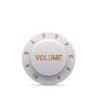
There are 3 common styles of knobs: - bell - speed - domed
philadelphialuthiertools.com - Choosing the correct knob for your guitar or bass.
Electronics Wiring Schemas¶
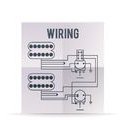
Active Pickups Electronics¶
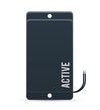
Active Electronics tries to reduce dependency from the shielded cable and amp input impedance. However, that needs power to operate, and that's its biggest drawback.
Custom Buffers (german) - used to decouple the guitar electronics from the sound influencing effects on the shielded cable.
Strings¶

Depending on following options your sound will be more bright or more mellow:
- Construction (Flat Wound/Round Wound)
- Material (Steel/Nickel) and
- Tension
Most manufacturers use following naming convention to describe tension of string set:
| Name | 'e' site approx. | 'E' site approx. |
|---|---|---|
| Extra-Light | .008 | .039 |
| Light | .009 | .042 |
| Regular | .010 | .046 |
| Medium | .011 | .052 |
| Jazz | .012 | .054 |
| Baritone | .013 | .056 |
There are also other hybrid sets available - like "Light Top/Heavy Bottom" and "Balanced Tension" combinations.
daddario.com - you can choose between bright and mellow sounding electric strings.
ghsstrings.com - also bright vs mellow overview, and tension guide (pdf)
thomastik-infeld.com - good jazz and blues strings
Scale Length¶
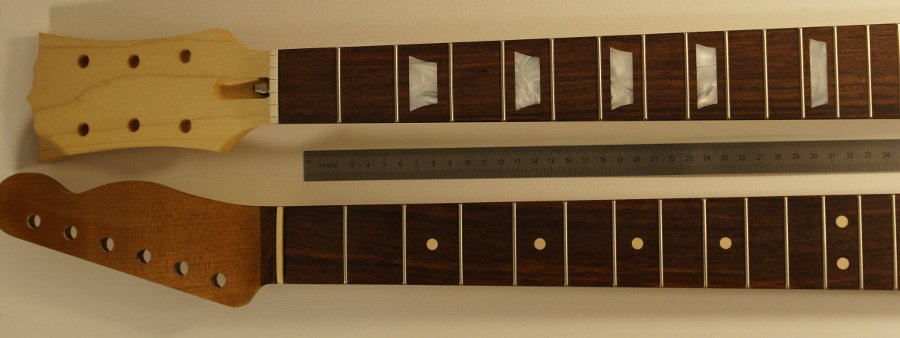
A guitar's scale length is length of string between the nut and the bridge.
Scale has a relatively low impact on sound and playability of the guitar. (Compared with other parameters such as strings or pickups).
Longer scale length sound and playability characteristics: - quick response, crisp attack - transparent sound with well-defined basses and heights - larger finger spread - higher string tension at constant gauge
Shorter scale length sound characteristics: - warmer - more sustain and longer decay
Common Scale Length:
- 572 mm (22.5") or shorter - ¾ & some travel guitars
- 596,9 mm (23.50") - Fender Jazzmaster/Jaguar guitars
- 629 mm (24.75") - many Gibson guitars
- 635 mm (25") - many PRS guitars
- 648 mm (25.5") - many Fender guitars
- 650 mm (25.5) - typical classical guitars
- 686 mm (27") or longer - Baritone guitars
Woods¶

| Woods | Sound¹ | Weight² | Used for³ | Looks |
|---|---|---|---|---|
| Alder | bright | medium | T/B | bright, simple |
| Ash | bright | medium | T/B | bright, simple |
| Basswood | neutral | light | B | bright, simple |
| Bubinga | bright | medium | T/B/N/F | red, often grained |
| Ebony | bright | heavy | N/F | dark |
| Maple | very bright | heavy | T/B/N/F | bright, often grained |
| Koa | warm | medium | T/B/N | dark, grained, attractive |
| Korina | warm | medium | T/B/N | grained, attractive |
| Mahogany | warm | medium | T/B/N | red |
| Poplar | neutral | medium | B | bright, simple |
| Rosewood | warm | medium | T/B/N/F | dark |
| Sitka Spruce | neutral | light | T/B | bright, simple |
| Swamp-Ash | neutral | light | T/B | bright, attractive |
| Walnut | bright | medium | T/B/N | gray, attractive |
| Wenge | bright | heavy | T/B/N/F | dark |
¹ Sound: the diagram for effects on tone stands mainly for acoustic instruments and NOT for solid body guitars, where other components have much larger impact on sound. Thus, a mahogany electric guitar can sound bright despite the representations below. ² Weight may vary for the same variety. ³ Used for: T - Body Top | B - Body | N - neck | F - fretboards
frudua.com - graphical examples for body and neck woods showing relationship between wood hardness, its density and tone.